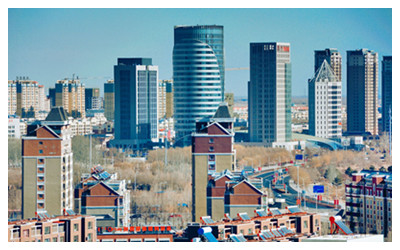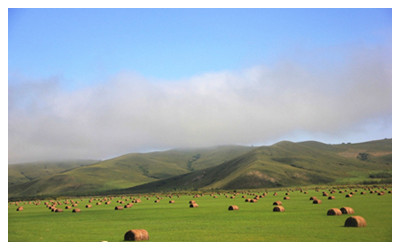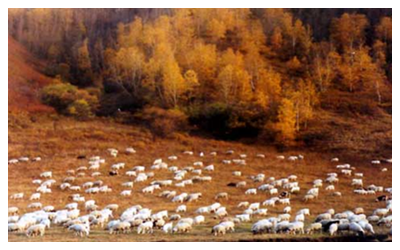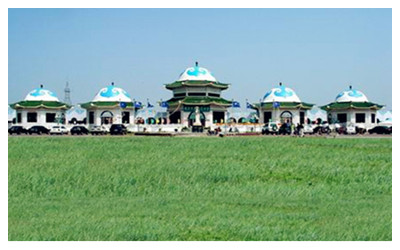Skype: neodalle-travel
Tel: +86 135 7447 2266
E-mail: sales@visitaroundchina.com
 Located in the east part of Inner Mongolian Autonomous Region and the western Songliao plain. Tongliao City is bordered by Jiling and Liaoning provinces in the east and the south. It neighbors Chifeng City in the west, situated at the convergence of Northeast China and North China.
Located in the east part of Inner Mongolian Autonomous Region and the western Songliao plain. Tongliao City is bordered by Jiling and Liaoning provinces in the east and the south. It neighbors Chifeng City in the west, situated at the convergence of Northeast China and North China.History of Tongliao
Tongliao is one of the headstreams of Mongolian nation. As early as five thousand years ago, Keerqin Grassland was inhabited and the ancients living there entered the slave society. It belonged to the Yan Kingdom during the Spring and Autumn Period (770BC-476BC) and is brought into the territory of the Qin Dynasty (221BC-206BC) after the union of China.
What to see in Tongliao?
Tongliao stands at the west of the Songliao Plain, Its northern part lies in the offshoot area of the Great Xing'an Mountains (Daxing'anling). Alluvial plains constitute the central part of the City, and the south and west territory is made up of low hills, ravines and sandy swamps. Here list top attractions in Tongliao.
 |
 |
 |
| Molimiao Shahu Area Horqin Prairie | Daqinggou National Nature Reserve | Zhurihe Prairie |
Tongliao has a profound ethnic culture. It was the hometown of Qing Dynasty Empress Xiaozhuangwen, patriotic general Senggelinqin, and national hero Gadameilin. As a famous city of prairie culture, Tongliao is known as “the birthplace of Andaiart”, “the birthplace of national folk music”, and “the birthplace of printmaking”. Andai dance, Uliger, and Mongolian Hur were listed among the first intangible cultural heritages of China.
When to visit Tongliao?
Enjoying a temperate continental climate, Tongliao has dry and windy spring, short and hot summer, cool autumn and chilly winter. Usually, intense rainfall concentrates on summer. In addition, Tongliao has abundant wind energy. Generally, winter is seldom suggested for visitors. Beauty of the sceneries at the rest of the year may cater for their different aesthetic needs.
How to reach Tongliao?
Tongliao has advantageous traffic conditions. Located at the intersection of Jilin, Liaoning and Inner Mongolia, it is an important transport hub connecting Northeast and Northern China.
By Air: Tongliao Airport is 10 kilometers (6 miles) southwest of the downtown area. Airport buses are available. The airport has opened domestic and international flights to/from Beijing, Shanghai, Guangzhou, Hangzhou, Xi’an, Chongqing, Dalian, Tianjin, Jinan, Zhengzhou, Changchun, Yantai, Hohhot, Erdos, Harbin, Hailar, Ulan Bator, Bangkok.
By Train: With six railways and four national highways running through it, Tongliao station is an important junction of national railways and one of 14 marshalling stations.
By Bus: Tongliao Bus Station is seated in Nanshun Dajie, opposite the railway station, Keerqin District. Generally, visitors can reach Tongliao in 4 hours from Jilin and 5 hours from Shenyang. The way from downtown Tongliao to the Keerqin Grassland will cost two hours. Tourist buses in the city proper will help visitor to the Fuyuan Temple.
 Ask Questions ?
Ask Questions ?